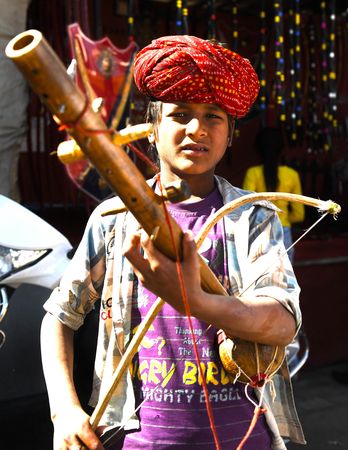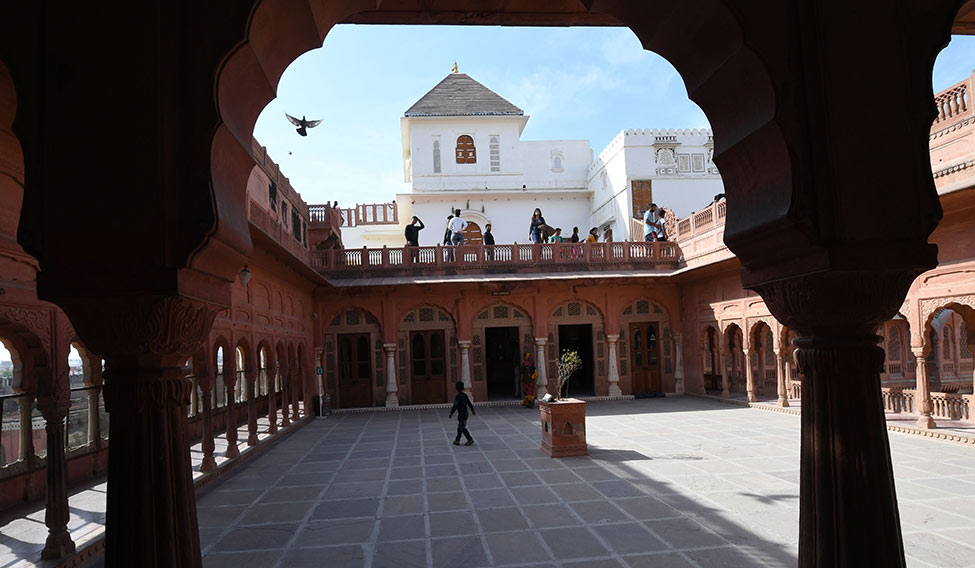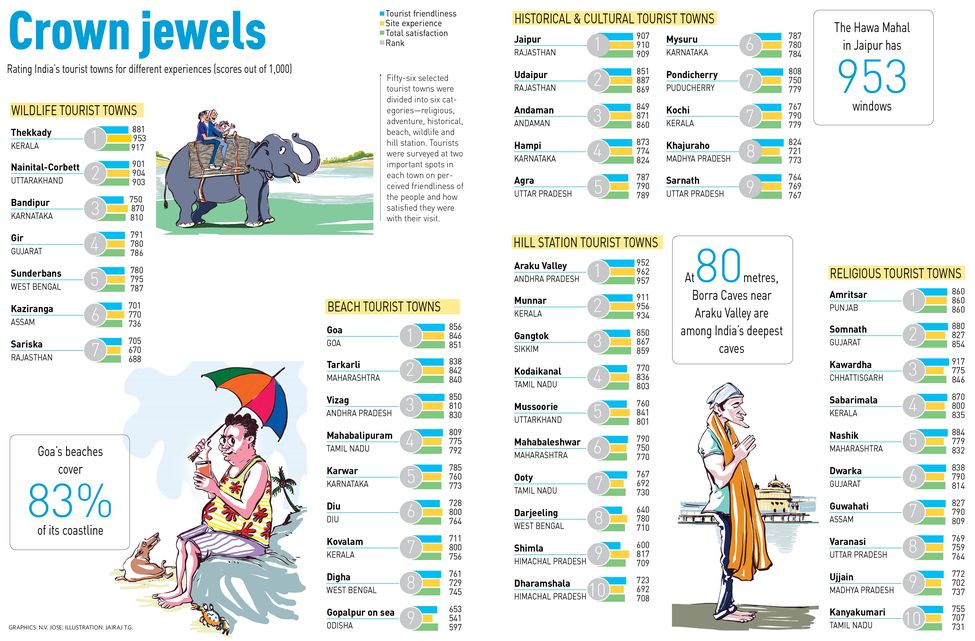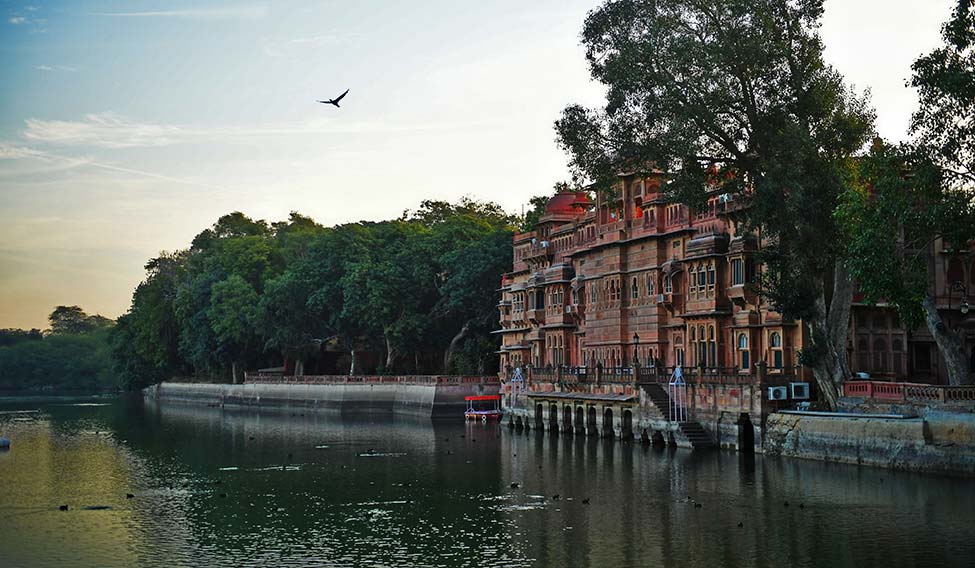I’ve never been to Eagle & Child in Oxford, where celebrated writers and friends J.R.R. Tolkien and C.S. Lewis used to chill and drink ale. It was here that the foundation of Lewis’s great book The Lion, the Witch and the Wardrobe was laid, over endless discussions about life, love and everything in between. I always imagined that if I ever went to a place like that, profundity would be within my reach. And thus would be birthed the Great Novel that I suspect has lain dormant in me. The closest I came to it was when I went to the Durg Cafeteria, a hilltop restaurant in Nahargarh Fort, Rajasthan. You can watch the sunset from the top of the fort and, at night, see the glittering city splayed out below. It finally hit me that I was in the land of the royals. This was where Maharana Udai Singh of Mewar founded the city of Udaipur; where Maharana Pratap fought the battle of Haldighat against the Mughal Army of Emperor Akbar; where Maharaja Sawai Pratap Singh built the beautiful Hawa Mahal for the women of the royal household to observe street festivities without interruption. This was a far cry from my land of Marxism, Malayalam and Moplah food.
“Around 600 tourists come here daily during season,” said Arun Phophalia, manager of the cafeteria. “We have 14 staff members who take painstaking care to keep the place clean and tourist friendly. We play classical music and hang lanterns on the trees to create an appropriate ambience for the visitors.”
 Songs for the soul: A young street musician at Pushkar | Salil bera
Songs for the soul: A young street musician at Pushkar | Salil bera
Rajasthan topped THE WEEK-MaRS travel survey for the best tourist state in India and we set out to find out why. At first glance, the reason is obvious. After all, this is the land of royal havelis, exotic camel rides and vivid colours. But then there is the other Rajasthan of small dhabas, desolate forts and hidden hunting lodges. This is the Rajasthan that we set out to explore—the Rajasthan off the beaten track.
Unlike in Kerala, where even the urchins who sell pirated Chetan Bhagats and fake sunglasses on the streets do so like they have all the time in the world, there is an air of busyness about Rajasthan, as if the people there are always late for something. They really milk their royal heritage, everything is some palace or the other, including the dusty dhaba called Rajputana Palace where we stopped to have Dal Baati Churma on the way to Bhangarh Fort near Jaipur. The only thing palatial about it was the hefty bill.
Bhangarh Fort itself was disappointing, full of cavernous hallways, dark spaces and unending steps that led nowhere in particular. It is a 17th century fort known for being the most haunted place in India. According to one legend, a king named Madho Singh built the fort after getting the permission of an ascetic called Bala Nath who lived there. The only condition of the ascetic was that the shadow of the fort should never fall on his home. One of the descendants of Madho Singh extended the fort, its shadow fell on the ascetic’s home and since then, it was doomed. The fort is as shaky as the legend and the only thing scary about it was the threat that a dislodged rock would fall on your head.
We spent a much more pleasant evening in an ethnic village resort called Chokhi Dhani in Jaipur. Turbaned and trussed up men met us at the reception and took us inside where the traditional Rajasthani experience has been recreated with camel rides, mehendi booths, magicians and palmists, folk musicians and dancers. The resort is spread across 17 acres and more than 200 people work there, Udaiveer Singh, its public relations officer, told us. “At least 1,000 people visit Chokhi Dhani every day,” he said. The resort has 102 rooms done up in an exaggerated Rajasthani style. But in the night, when the hanging bamboo lamps are lit up, the entire place glimmers like a fairytale castle. After watching the magic show by a magician who clapped at his own tricks and being told by a palmist that my health would be poor and I would be in two relationships in the coming year (hopefully not simultaneously), we had a sumptuous meal of rice, three types of roti, five types of vegetables, halwa, bajra khichdi, garlic chutney, churma and various other delicacies. One could only wish that real Rajasthani villages were like Chokhi Dhani.
The next day early morning, we set out to Ajmer and Pushkar, two sacred towns in Rajasthan, a three-hour drive from Jaipur. No visit to Ajmer would be complete without going to the Dargah Sharif, which houses the tomb of Moinuddin Chisti, the founder of the Chisti order of Sufism. The shrine was built by the Mughal king Humayun in honour of the saint. It has three gates—the Nizam Gate, the Shah Jahan Gate and the Buland Darwaza. Emperor Akbar made a pilgrimage to Ajmer ever year. He, as well as Emperor Shah Jahan, built mosques inside the shrine complex. Everything from incense sticks to flowers and framed photographs is sold by men on the street leading to the dargah. If life was fast in Jaipur, in Ajmer, it seemed to be happening all at once— hawkers hollering, bicycles weaving between the crowds, beggar women pulling at your clothes, men shouting at you to remove your shoes and shoving shawls at you to cover your head. After the clutter and chaos of the street outside, I embraced the calm and sanctity of the dargah with great relief.
 Junagarh fort has been beautifully preserved | Salil bera
Junagarh fort has been beautifully preserved | Salil bera
The temple town of Pushkar is only 11 kilometres from Ajmer and I found it to be more charming than its neighbour. There was something mystic about the place which flanks the Pushkar lake, which is said to have appeared when Brahma dropped a lotus flower there. It is also home to one of the world’s few Brahma temples. Far from the madding crowd, there is a sense of serenity here and the sound of devotional chanting hums in your ear long after you leave the place. It might also be a good idea to visit Pushkar during the Pushkar fair in October-November, which is one of the largest annual camel fairs in the world.
We spent the night at Gajner Palace, approximately 30 kilometres from the city of Bikaner. Gajner Palace was built by H.H. Maharaja Sir Ganga Singhji, the ruler of Bikaner, in the early 20th century, when it became a hunting and recreational retreat in princely India. Maharaja Ganga Singhji was aware that his country palace was a valuable diplomatic asset to lure sportsmen and British burrah sahebs. Currently, it is a heritage hotel part of the HRH Group of Hotels. The architecture of the palace is a blend of traditional Rajput palaces and European country houses. Spread across 6,000 acres, the palace grounds are a private wildlife sanctuary, home to wild boars, black buck, neelgai and other animals. There is also the Gaj Sagar Lake adjoining the palace, where you can see demoiselle cranes and imperial sand grouse flocking in abundance in the early mornings. Over a period of 60 years, many distinguished leaders including the Princes of Wales George V and Edward VIII, former French prime minister M. Clemenceau and the first president of India Rajendra Prasad have visited the palace. So have Salman Khan, Jackie Shroff, Bobby Deol, Shakti Kapoor and a host of other Bollywood celebrities. “On an average, we have around 500 guests visiting the palace in a month,” said Madan Singh Shekhawat, executive general manager, northern region, of HRH Group of Hotels. If you’re going there, don’t go for the grandeur or the opulence but go for the natural beauty. In the wild throng of trees and birds, life ground to a slow canter and I could at last be the indolent Malayali that I, at heart, am.

But, when in Rajasthan, do as the Rajasthanis do. So, after a sedate stay at the palace, we signed out and headed to the Junagarh Fort in Bikaner. The fort was built during the reign of Raja Rai Singh, the sixth ruler of Bikaner, who ruled from 1571 to 1611. There are many palaces and temples which are made of red sandstone and marble in the fort complex. After Raja Rai Singh, his descendants added many floors and decorations to the fort. Karan Singh built the Karan Mahal palace, Anup Singh added the Zenana quarter and a public audience hall called the Anup Mahal, Gaj Singh refurbished the Chandra Mahal or the Moon Palace. Ganga Singh built a new palace in Bikaner called Lalgarh Palace and shifted there in 1902. The interiors of the palaces are decorated in traditional Rajasthani style and the fort itself is designed in several architectural styles making it an amalgam of many cultures. What is great is that, unlike so many monuments in India, the Junagarh fort has been beautifully preserved with letters and photographs of the rajas pristinely framed on the walls and their weapons and other artifacts safeguarded in the museum.
Royalty can be imagined but cannot be experienced until you go to a place like Junagarh Fort where no frills have been added to the truth to make it more palatable to tourists. Here, for me, was the road truly less travelled…






